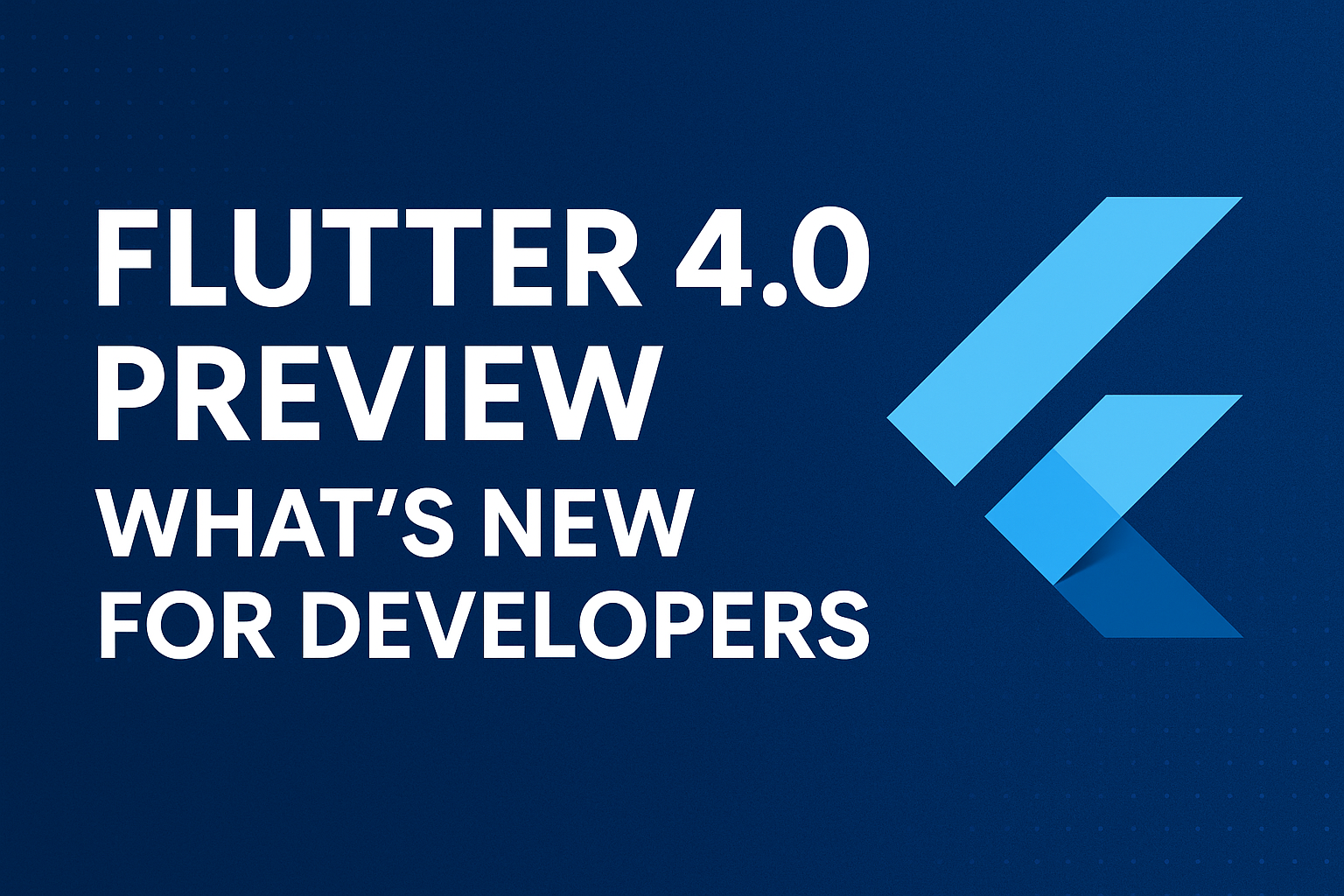Flutter 4.0 preview: what's new for developers
Flutter 4.0 Preview introduces a host of exciting advancements for developers, including a revamped rendering engine that boosts performance and reduces app sizes, enhanced developer tools with improved debugging and profiling capabilities, and expanded s
Flutter 4.0 Preview: What's New for Developers
1) Introduction
Flutter 4.0 marks a major milestone for Google's open source UI toolkit, advancing cross platform app development with enhanced performance, tooling, and UI capabilities. It empowers developers to build mobile, web, desktop, and embedded apps from a single codebase more efficiently than ever before.
2) Rendering and Performance Enhancements
Revamped Skia Engine (Skia 2.x): With improved shader compilation pipelines, asynchronous texture uploads, and reduced frame jitter, Flutter 4.0 delivers smoother UI rendering and maintains stable 60fps or even 120fps animations on capable devices.
Smaller App Sizes: A more modular architecture reduces binary sizes across platforms, optimizing app delivery.
Optimized Rendering Engine: Enhances frame rendering and animation smoothness across all devices, including better multi GPU support for desktop platforms.
3) Enhanced Developer Experience and Tooling
New DevTools Profiler: Tracks GPU thread utilization and highlights performance bottlenecks, linking directly to source code for quicker debugging.
Improved Hot Reload and Hot Restart: Further optimized to speed up developer workflows and iteration cycles.
Dart 3.2 Integration: Brings pattern matching, stronger null safety, and faster ahead of time (AOT) compilation for better performance and reliability.
Real Time UI Inspection: Expanded Flutter Inspect allows on the fly property editing, especially for desktop apps, reducing debugging time significantly.
4) Extended Desktop Support
Stable Desktop Features: Drag and drop, multi window support, native menus, and fluent design components are now stable across Windows, macOS, and Linux.
Platform Specific Integrations: Improved support for platform APIs, including advanced accessibility on macOS, enhanced Wayland support on Linux, and WinUI features on Windows.
Advanced Input Handling: Better keyboard and pointer interactions tailored for desktop productivity and enterprise grade applications.
5) Improved Web Capabilities
Faster Initial Load Times: Optimizations target quicker start up times, especially for Progressive Web Apps (PWAs).
Enhanced Rendering Pipeline: Upgrades in CanvasKit and DOM rendering ensure smoother visuals, particularly for graphically rich applications.
Responsive Layout Enhancements: New MediaQuery and LayoutBuilder features offer improved adaptability and native like experiences across diverse screen sizes.
6) UI Components and Theming Updates
Material Design 3 Integration: Expanded support with new components like the Segmented Button, redesigned BottomAppBar with inline Floating Action Button, and updated Drawer designs, all adhering to Material 3 standards.
Adaptive Theming: Introduction of seeded color schemes with dynamic tonal palettes and a built in motion system aligned to Material 3’s curving transitions.
Cupertino Widget Enhancements: Refinements ensure iOS style apps feel more native and fluid.
7) What Makes Flutter 4.0 a Game Changer for Developers?
Flutter 4.0 combines significant runtime and tooling improvements with UI modernization and deeper platform support—enabling developers to build faster, more stable, and visually appealing apps across multiple platforms from a unified codebase. This release streamlines debugging, accelerates iteration, and enhances user experiences with robust, adaptive components.
8) Wrapping Up
Flutter 4.0 is set to elevate cross platform application development by delivering performance gains, refined developer tools, and enriched UI capabilities. Its advances in rendering, desktop and web support, and Material You theming empower developers to create highly responsive and polished apps with greater ease and efficiency.
Summary:
Flutter 4.0 delivers a revamped Skia rendering engine, powerful DevTools upgrades, Material Design 3 theming enhancements, full desktop stability, and optimized web performance. These innovations boost developer productivity, reduce app sizes, and enhance the end user experience across mobile, web, and desktop platforms.
Related Posts
In 2025, top Angular libraries offer modern, feature-rich components and tools for building dynamic web apps. From powerful data grids to low-code platforms like UI Bakery, these libraries enhance development speed, UI design, and scalability, making them essential for Angular developers.
Migrating from AngularJS to Angular 17 involves gradually upgrading your app by running both frameworks together using tools like ngUpgrade, rewriting components in TypeScript, and adopting Angular’s modern architecture to enhance performance, maintainability, and long-term support.
Angular state management tools help organize and handle app data efficiently, improving scalability and maintainability. Popular options include NgRx for robust, RxJS-based patterns, and newer Signal Store solutions that offer simpler, reactive approaches integrated tightly with Angular’s latest features.
RxJS in Angular empowers developers to manage asynchronous data streams with powerful operators like `forkJoin`, `combineLatest`, and `zip`. Mastering these key operators in 2025 is essential for building efficient, reactive applications that handle complex event sequences seamlessly.
Angular performance optimization in 2025 focuses on improving app speed and responsiveness by using techniques like OnPush change detection, lazy loading, efficient data caching, and AOT compilation. These practices reduce load times, enhance user experience, and ensure scalable, fast Angular applications.
In 2025, Angular remains preferred for large-scale, enterprise apps with its robust, all-in-one framework, while Vue attracts developers seeking simplicity and fast development for smaller projects. Both frameworks excel, with choice driven by project needs and team expertise.
Angular Signals are a new reactive primitive in Angular 16 that enable fine-grained, efficient change detection by automatically tracking dependencies and updating only affected parts of the UI. They simplify state management and boost app performance, revolutionizing Angular's reactivity model.
Angular interview questions to prepare in 2025 focus on core concepts like components, directives, data binding, routing, and dependency injection, along with TypeScript mastery and latest Angular features to ensure strong practical knowledge for building scalable, efficient web applications.
AngularJS reached its official end of support in January 2022, meaning no further updates or security patches. To ensure app security and performance, developers should consider migrating to modern Angular versions or seek third-party long-term support options if immediate migration isn’t possible.
The Angular Roadmap 2025 highlights upcoming features focused on improving developer experience and performance, including zoneless Angular, Signals integration, enhanced Forms, async data handling, improved HMR, and expanded Angular Material/CDK enhancements, driving modern, efficient web app development.










